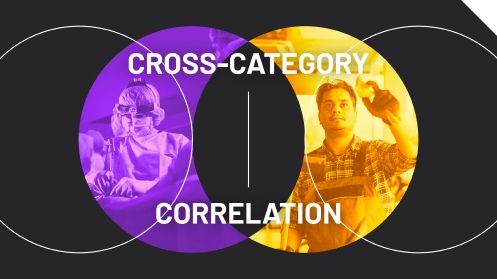The Advancement of eCommerce in the B2B Space – Pre-Covid, Now, and Future
In the years leading up to the Covid-19 pandemic, B2B eCommerce was gaining traction, though at a slower pace compared to the B2C sector. Traditionally, B2B transactions were dominated by in-person meetings, trade shows, and direct sales teams. However, the growing availability of digital tools and platforms started to shift this model.

Pre-Covid: The Early Days of B2B eCommerce
The slow adoption of eCommerce in the pre-Covid era was primarily due to two things – complexity and integration issues. According to a Forrester report from 2019, only 13% of B2B companies had fully integrated eCommerce solutions, many citing that integrating eCommerce platforms within existing ERP and CRM systems was often problematic and lead to data silos and inefficiencies.
Early innovators were seeing success, however, reporting a 30% increase in sales efficiency, according to a McKinsey study from 2017. The ability to offer customers an online ordering option enhanced customer satisfaction and loyalty, and started to change the way B2B buyers preferred doing business.

During Covid: Accelerated Transformation
Whether companies were ready or not, the Covid-19 pandemic acted as a catalyst for the rapid adoption of eCommerce in the B2B sector. With physical interactions severely restricted, businesses had no choice but to pivot to digital channels to maintain operations.
What resulted was businesses forced to scale their digital operations quickly, often leading to growing pains, such as website crashes and logistical bottlenecks. During the early months of the pandemic, some B2B companies saw a 50-70% increase in online order volumes (McKinsey, 2020), which they were unprepared to handle.

This rapid shift also exposed vulnerabilities in cybersecurity, with many companies facing increased risks of data breaches. And employees had to learn new digital tools and processes in a remote environment.
But with no other choice, the necessity of eCommerce drove widespread adoption, even among previously hesitant companies. In fact, eCommerce in the B2B sector grew by 18% in 2020, reaching $1.3 trillion in sales (Digital Commerce 360, 2020). The pandemic spurred innovation to meet customer demands, with some business reporting a 35% increase in customer acquisition through digital channels (Forrester, 2021).
Now: The New Normal
As the world emerges from the pandemic, B2B eCommerce has become an integral part of business operations. Companies have invested in robust digital infrastructures and are now focusing on optimizing their eCommerce strategies for enhanced customer experiences, market expansion, and operational efficiency.
The widespread adoption of eCommerce has not been without its challenges, however. The surge in digital interactions has increased competition, making it harder for companies to stand out and retain previously loyal customers. And importantly, managing and leveraging the vast amounts of data generated from eCommerce activities has become a bigger challenge. A study by Forrester in 2021 indicated that 60% of B2B companies struggle managing their data generated by eCommerce activities.
Future State: The Next Five Years
Looking ahead, the future of B2B eCommerce is promising, with several trends set to shape the landscape over the next five years.
Expectations:
- AI and Machine Learning: These technologies will play a crucial role in personalizing customer experiences, predicting trends, and optimizing supply chains. The AI in B2B eCommerce market is expected to grow at a CAGR of 25% from 2023 to 2028 (Market Research Future, 2023).
- Omni-channel Integration: Seamless integration across multiple channels will be essential, providing a consistent experience whether customers interact online, in-person, or through mobile devices. By 2025, 85% of B2B companies are expected to have an omni-channel strategy in place (Gartner, 2023).
- Advanced Analytics: Data will be the cornerstone of future eCommerce strategies, with advanced analytics offering deeper insights into customer behavior and market trends. A study by Forrester in 2023 shows 90% of B2B companies plan to increase their investment in advanced analytics by this time next year.
- Blockchain: The use of blockchain to enhance transparency and security in B2B transactions is projected to grow by 50% annually through 2028 (Grand View Research, 2023).
Potential Challenges:
- Cybersecurity: As digital transactions grow, so will the risks, necessitating robust cybersecurity measures. The global cost of cybercrime is expected to reach $10.5 trillion annually by 2025 (Cybersecurity Ventures, 2021), meaning companies need to have a defense plan in place.
- Regulatory Compliance: Navigating global eCommerce regulations is becoming increasingly complex, with 60% of companies citing it as a significant challenge (EY, 2023).
- Technological Disparities: Ensuring all business partners and customers are equipped to engage in digital transactions will be crucial to avoid bottlenecks.
- Pure eCom Players: Pure eCommerce players continue to struggle with B2B shipping requirements and expectations. Unlike B2C, B2B shipping often involves larger volumes, more complex logistics, and specific delivery schedules. Additionally, manufacturers and distributors face challenges in balancing traditional B2B pricing dynamics with the transparency of eCommerce pricing. Precision analytics can help streamline your eCommerce operations, ensuring you meet shipping expectations while maintaining competitive and transparent pricing strategies.
Transformation, innovation, and adaptation have been the name of the game over the past 5 years for B2B eCommerce companies. As we look to the future, embracing emerging technologies and improving data management will be vital to staying ahead in the evolving digital landscape.
If your company needs help managing and utilizing your growing digital database, Precision is here to help you turn your raw data into actionable strategies for sustained success in the B2B eCommerce space.





